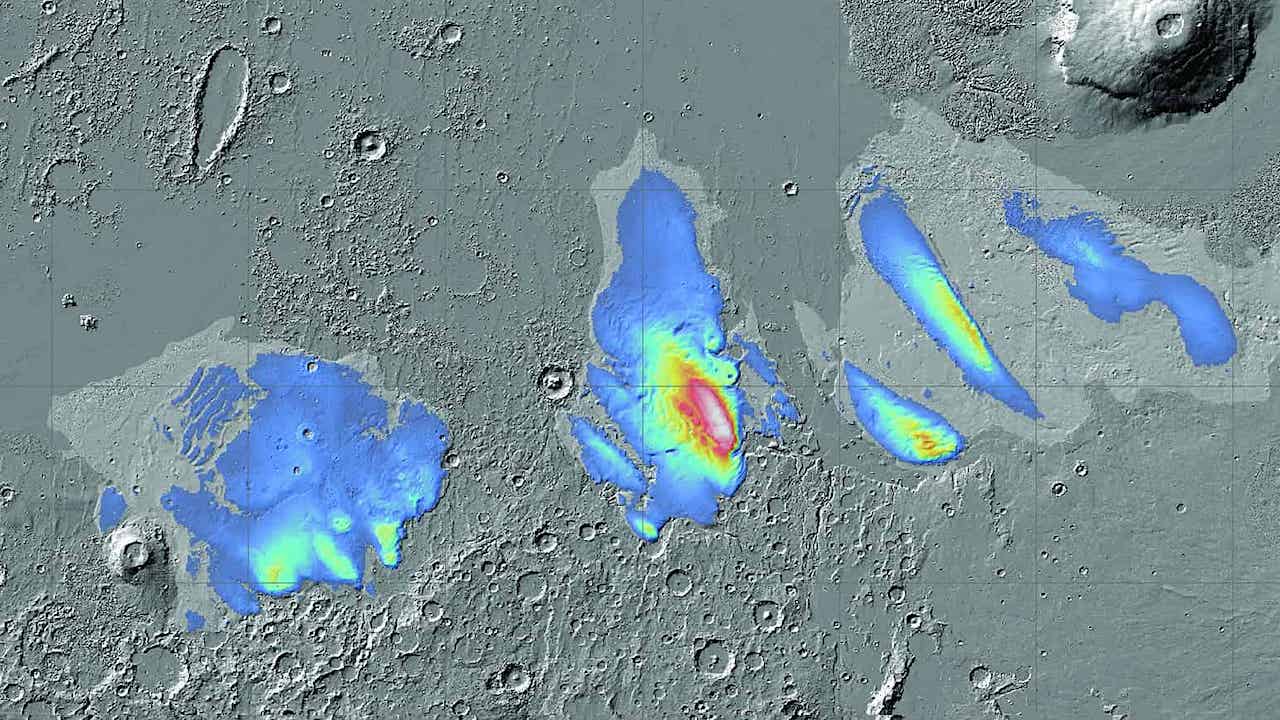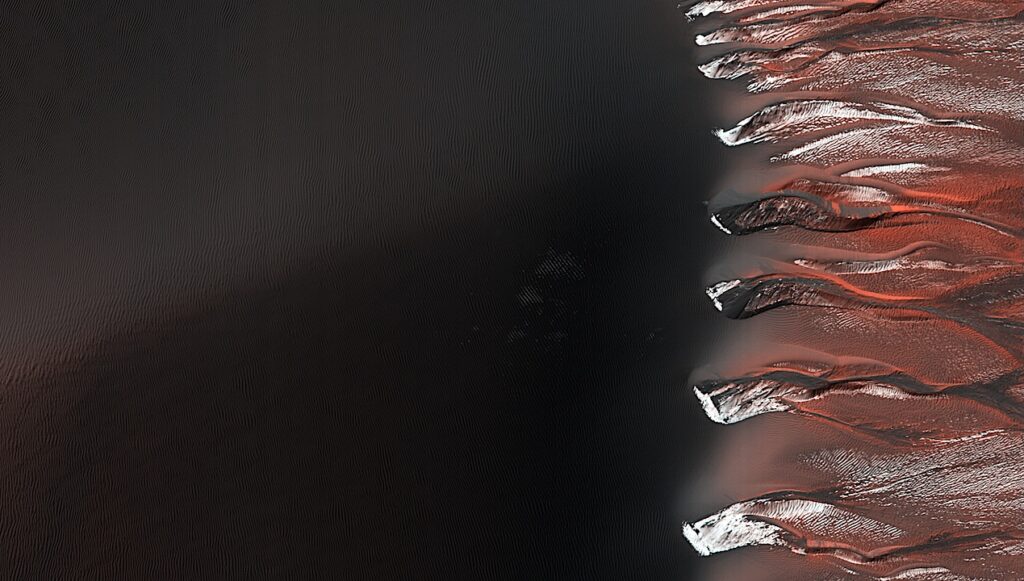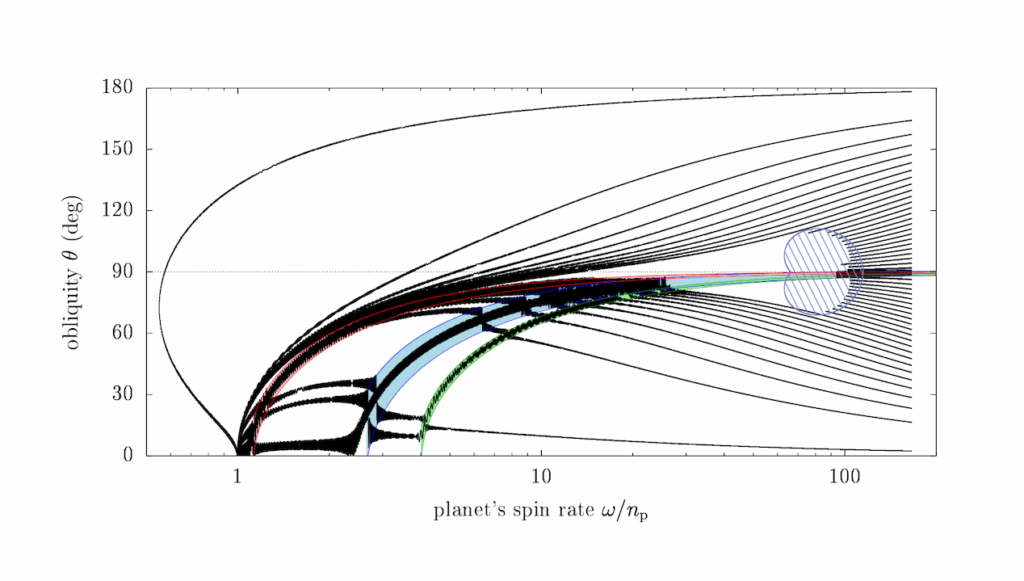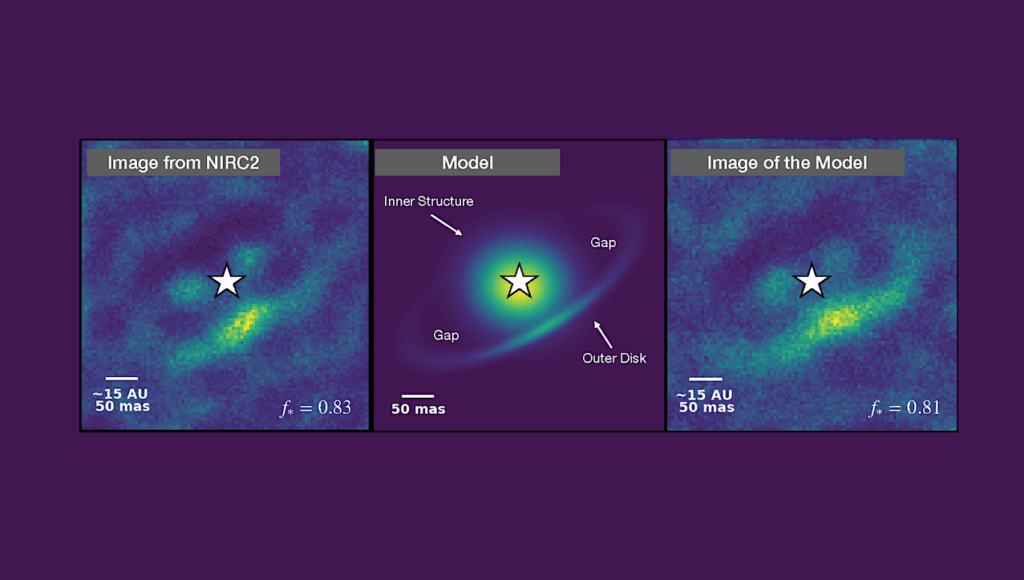Vast, Potential Ice-Rich Deposit Found In Mars’ Equatorial Region

A potential ice-rich portion of the Medusae Fossae Formation deposits may contain the largest volume of water in the equatorial region of Mars.
Data from the Mars Advanced Radar for Subsurface and Ionospheric Sounding (MARSIS) – a subsurface radar sounder on the Mars Express orbiter searching for water and studying the Martian atmosphere – reveals layering in the Medusae Fossae Formation (MFF) deposits. These layers are likely due to transitions between mixtures of ice-rich and ice-poor dust, analogous to those in Polar Layered Deposits, according to the paper “Evidence of Ice-Rich Layered Deposits in the Medusae Fossae Formation of Mars” in Geophysical Research Letters.
“If this is ice, it would represent the most substantial low-latitude ice ever detected on Mars. From a human mission perspective, ice represents a valuable resource for life support and to generate fuel for the return trip home,” said Planetary Science Institute Senior Scientist Gareth A. Morgan, a co-author on the paper. “Low latitudes are also very desirable for multiple reasons, the most important being temperature and solar energy due to the relatively high Sun angles. However, the potential ice deposits are buried under hundreds of meters of dry material and would be very difficult to extract.”
Thomas R. Watters of the Center for Earth and Planetary Studies, National Air and Space Museum, Smithsonian Institution, is lead author on the paper.
The MFF is a mountainous collection of sedimentary deposits that straddle the Martian equator. From image analysis, the MFF are seen to be finely layered and highly friable – actively being reworked/eroded by the wind – and they are also billions of years old. The origin of the MFF is a mystery. Current formation hypotheses range from volcanic ash to ice-rich deposits. This paper provides support for a hybrid model of the two endmember scenarios.
Morgan contributed to the analysis of the subsurface structure of the MFF deposits using both MARSIS and SHARAD (Shallow Radar that “pings” the surface of Mars in search of a strong radar return wave that may indicate the presence of underground liquid or frozen water) data and also made the potential water ice volume estimates.
“Such ice provides vital clues regarding the climatic evolution of Mars. We have appreciated for a while now that Mars regularly experiences a type of ice age. During periods of high obliquity – the axial tilt of the planet that determines the extent of the seasons we experience on Earth – ice becomes less stable at the poles and will migrate to lower latitudes. If the MFF are indeed ice rich, as they are situated at the equator it suggests Mars experienced periods of extreme obliquity,” Morgan said.
Morgan’s work was funded through a grant to PSI from the NASA’s Mars Reconnaissance Orbiter mission.
Astrobiology








